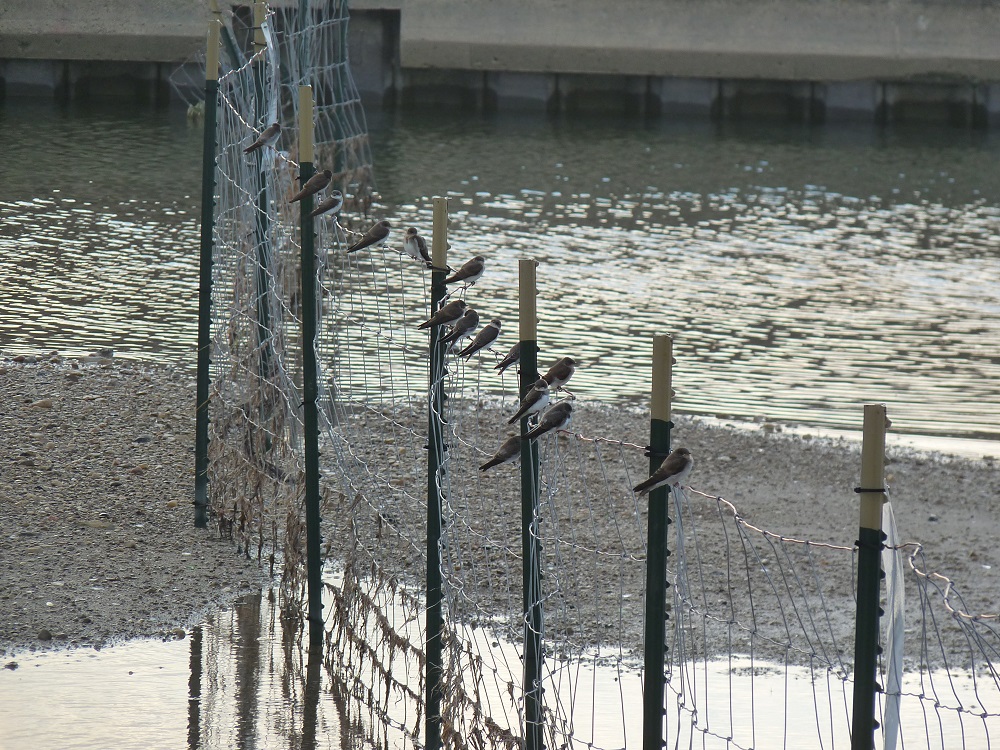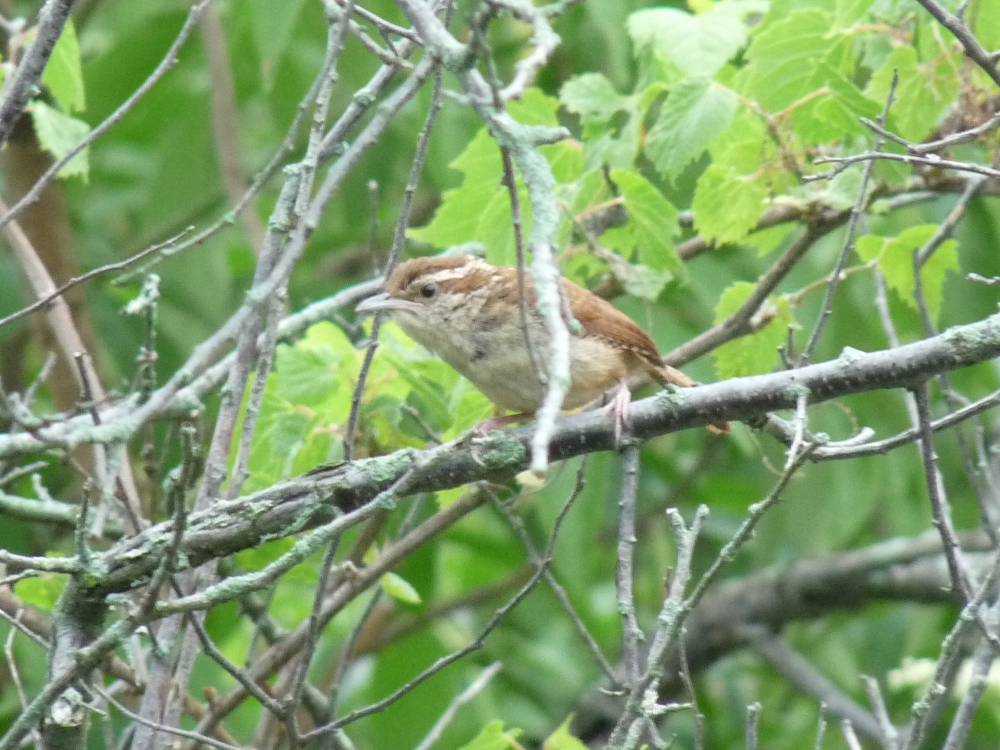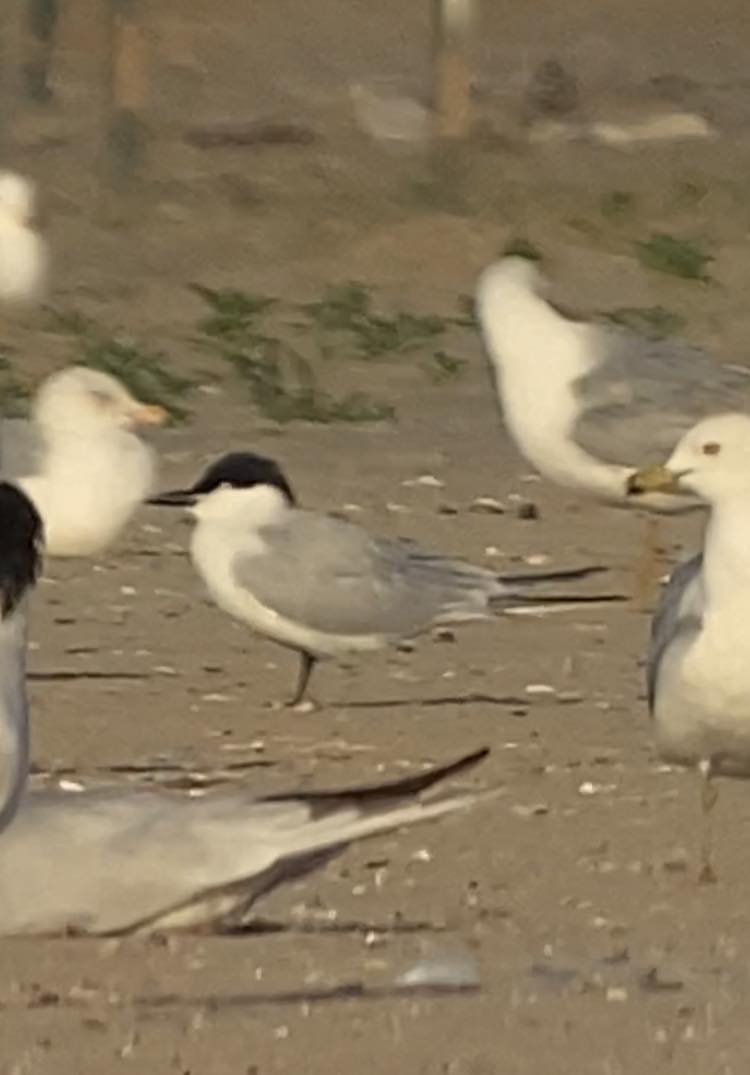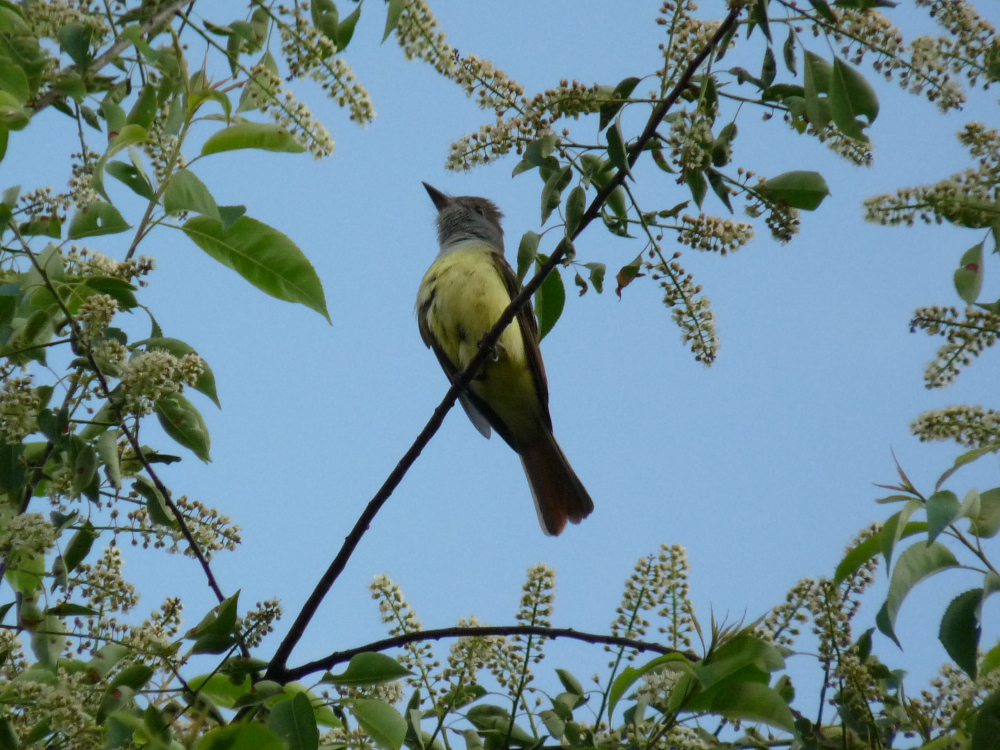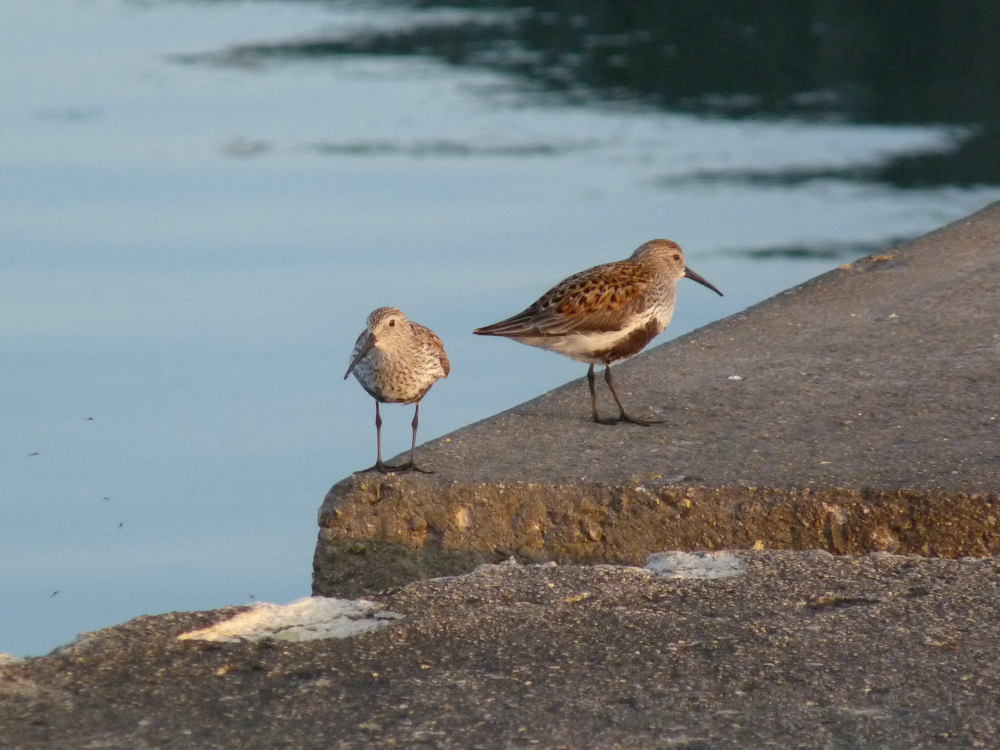Five species of swallows nest at Montrose – Barn, Bank, Northern Rough-winged, Tree, and Purple Martin. In mid summer, the young and adults of several of these species like to perch on the ropes and fencing in the Dunes. If you want to work on swallow identification and aging, the Dunes provide an excellent opportunity for study and photography. Similar species will often queue up side by side, making the differences between them more obvious. Watching the adults feed their begging children is also entertaining.
Author Archives: rhughes
Carolina Wren, July 1, 2023
A Carolina Wren was a pleasant surprise on July 1. Carolina Wrens aren’t rare in most of Illinois, but the further north you go in the state the less common they are, and they’re uncommon and irregular as far north as Chicago. Oftentimes, and for unknown reasons, they appear in the middle of summer. This is a kind of post breeding dispersal well documented in other species, like Great Blue Herons and Swallow-tailed Kites.
The Late Show – June 13, 2023
Here we are, almost two full weeks into June, and we’re still getting a trickle of migrants. Avian activity is dominated by the local breeding birds, but these bona fide migrants were at Montrose on June 13
Ruddy Turnstone
Semipalmated Plover
Semipalmated Sandpiper
Least Flycatcher
Yellow-bellied Flycatcher
Blackburnian Warbler
Chestnut-sided Warbler
What’s interesting is that the first southbound summer migrants will be showing up in just a few weeks. There almost isn’t a time when birds aren’t moving in one direction or the other, and Montrose Point is one of the best places to witness this near overlap in migrations.
Gull-billed Tern, June 1, 2023 – Second Illinois Record
Woody Goss found a Gull-billed Tern on the protected beach late in the day on June 1. This is just the second record for Illinois and a first site record for Montrose. The bird flew off to the south after 30 minutes and has not been seen since. Gull-billed Terns are normally found on the Gulf and East coasts of the United States. They usually don’t stray far from the coast, though there are a number of extralimital records for the eastern United States. This amazing record is a reminder to keep checking the beach for unusual gulls, terns, and shorebirds.
To see the updated list of birds recorded at Montrose, refer to the Montrose List page on this blog.
June 1, 2023
Migration doesn’t come to a screeching halt when May ends. We always get some spillover into early June, and this June 1 proved the point. Over 70 species were reported to eBird by all observers, and I ended up with 60 species in about 2.5 hours of effort. My migrant highlights include
Semipalmated Plover
Dunlin
Semipalmated Sandpiper
Yellow-bellied Flycatcher
Swainson’s Thrush
Bobolink
Northern Waterthrush
Connecticut Warbler
Magnolia Warbler
Bay-breasted Warbler
Wilson’s Warbler
Dickcissel
All of the above birds are bona fide migrants that don’t breed at Montrose. I also had Great Crested and Willow Flycatchers and Eastern Wood-Pewees. These birds have bred at Montrose or nearby but could just as well be migrants. The point is you should keep checking Montrose into early June. The pace has slowed down from mid May but we’re still seeing a variety of shorebirds, warblers, flycatchers, and other birds. Why not squeeze every last drop out of migration while it lasts?
Winding Down, May 30, 2023
We usually get a nice spillover of migrants into early June, but this year activity has dropped sharply since the peak day on May 19. Migrants are in a hurry to get to their breeding grounds, so they probably took advantage of the favorable weather we’ve been experiencing and continued moving north without stopping. We should get one last push of flycatchers, cuckoos, Red-eyed Vireos, and later warblers sometime in the next week. Spring shorebird migration also continues into June, and a rare gull or tern could show up, so don’t forget to check the beach.

